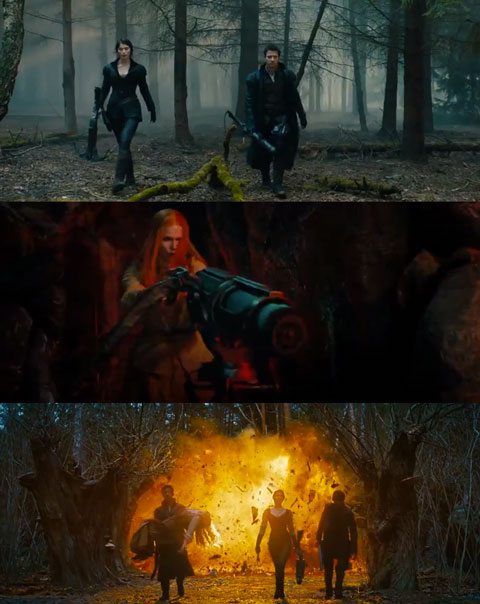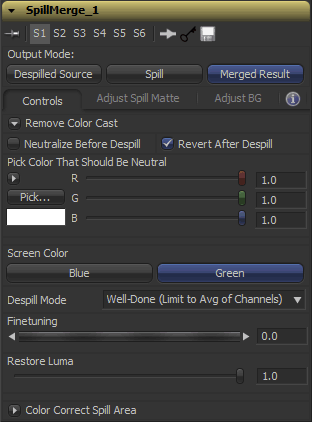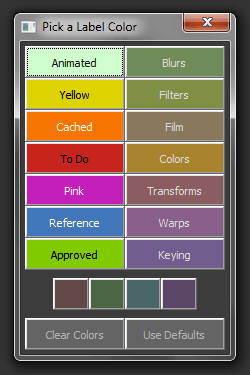The Hobbit – Yet Another Disappointment in 2012
I really would have wanted to end 2012 with a nice movie-going experience. I tried to ignore people lamenting about 48fps or stuff that wasn’t part of the book. I had never read the book.
Before the movie started there was a trailer for the new World of Warcraft update called “Mists of Pandaria”. And it had Kung-Fu-Pandas in it, fighting orcs. It was the most ridiculous thing I had seen in recent months. Little did I know that this was foreshadowing the movie I was about to watch.
‘The Hobbit – An Unexpected Journey’ is basically the same thing but roughly 3 hours longer. It’s an attempt to blow up a tiny story to not only 9 hours but to Lord of the Rings epic-ness while making it look like a video game cinematic. The term cinematic is actually quite ironic. While video games have tried to look more and more like movies (by their themes, camera angles, animated or life action cut scenes and the use of machinima) it seems like the future of blockbuster movies is to look more and more like video games:
Level 1 is the Shire. Go on a journey, battle some foes, meet some allies… until you reach Level 6 – The Goblin Cave! Press A to swing your sword and B for a special move to decapitate your enemies. The Level Boss is the Goblin King himself! Attack his vulnerable spot and when your energy level drops low, press Up-Down-Up-Down to make Gandalf appear and save your ass.
Sorry, Bilbo, the princess is in another castle. Stay tuned for parts 2 and 3 – available next year.
For a movie essentially geared at a young audience who might not even have seen LoTR the movie is an astonishing mix of childish themes, brutal (yet blood-less) hacking and slashing and dialog scenes that drag on for way too long.
The movie’s first 15 minutes are filled with shots of dwarfs eating cheese, juggling plates and two musical numbers.
After two thirds of the movie I had to accept that nobody’s going to get injured or die even after falling downhill for hundreds of meters. I accepted that one of the dwarfs and the goblin king looked like “Fat Bastard” from Austin Powers. I was no longer surprised when Gandalf just showed up and saved everybody at the last moment using his magic powers again and again – this happened at least three times during the movie.
And the HFR thing?
For a movie that is so intend on selling an experience and showcasing new technology (instead of, you know, making you feel sympathy for fictional characters on screen) “The Hobbit” actually tries hard to make you loathe it. The high frame rate irritated me every other minute with its “sped up” effect that you might have heard about. It’s an optical illusion and my fellow movie-goers didn’t notice it but to me it felt like watching a TV documentary about the movie, not the movie itself.
The 3D felt forced as well. I might be from a dying generation of movie-goers but it still irritates me when there are elements in front of the screen while being cropped at the edges. Fast-moving sparks, butterflies or gold coins still are a flickery mess to me even at 48fps. And landscape shots still have that miniature look to them because directors and DOPs insist on using an exaggerated interocular distance.
In a way it’s comforting to know that even huge productions like this suffer from that shit that James Cameron successfully avoided in Avatar. But that’s probably because one disappointed moron in the target audience of 16 year-olds (“omg the 3D was non-existing I could have left my glasses off”) weighs heavier to any producer than somebody who is pulled out of the movie by miniature landscapes.
All of this overshadows the fact that the VFX are of course top notch. Except for one or two scenes you never think about the fact that Gandalf and the dwarfs are composited together for their difference in size. Closeups of wargs and eagles are great and the level of detail in the dwarf city or goblin lair is breathtaking.
In hindsight I should have watched the 24fps 2D version to apprechiate all of this.
6/10
“Damn Damn Good:” Movie Bob’s positive review of “The Hobbit”
“I hope the worst is behind us”: Red Letter Media’s more negative review of “The Hobbit”
Hänsel & Gretel: Witch Hunters
HO – LY – SHIT. That one looks like it’s gonna be fun 🙂
Or… it could suck like all the other movies of that genre that try to re-invent fairy tale characters in a world tainted by the Twilight saga (“Red Riding Hood” comes to mind but also “Van Helsing” although it predated this decade’s vampire craze). But at least “Hansel & Gretel” looks like it’s going to be honest: no hollow claims of answering questions about the origin of life (“Prometheus”) or re-inventing time travel (“Looper”).
Just “this is what Hansel & Gretel would look like in a steam-punk movie for teenage boys. Hell yeah!” *
Who knows if it’s gonna be good. Maybe it’s witty like “Brothers Grimm”, maybe it’s trashy like “Underworld” or “Resident Evil”. But with stills like these, it’s definitely on my watchlist even though this mentality has led to disappointment most of the time 🙂

The VFX look much much better than in Resident Evil though. That hero shot at the bottom looks really well done. Light is engulfing the actors quite nicely and although a real explosion would be even brighter the actors are underexposed enough to sell the shot.
Compare this to a shot from the Resident Evil trailer I’ve criticized in the past where the integration of explosion and environment is abysmal.

For people who are not so much aware of what constitutes effects shots nowadays (and why movies get more expensive all the time…): I’m pretty sure the fog in the topmost screenshot was added later on in postproduction. Even if there was such a forest with the right kind of humidity at the right time of day to produce a suitable fog, no sane producer would allow a shot of the main actors to be restricted by such unreliable weather conditions. Doing the fog in post also allows the director creative freedom to add details like those godrays. All it takes is a matchmoving artist, a bunch of roto slaves and a 4-digit amount of dollars. If the director requests half a dozen versions until he’s satisfied with the color and density of the fog, the VFX company probably won’t break even. That’s the state of the industry.
*) yeah, I’m using the term “steam-punk” loosely. But any movie that mixes gatling guns with 18th century German timber-frame construction qualifies as steam-punk to me.
Keying Window Reflections, Smoke and Explosions
This post is about a keying technique that saved my ass on a couple of difficult shots recently.
Most keyers are all about pulling a matte from a green or blue screen plate which is then used to merge a despilled image onto the desired background. This technique has its limitations though and who doesn’t know the tedious task of combining and layering several keyers in different parts of an image until the result looks right.
There are, however, keying issues that are hard to get right even by combining multiple keyers: things like glass or glow. Both phenomena are additive in nature – they add light on top of what’s reflected from the green screen into the camera lens – which makes them different from semi-transparent things like smoke or motion blur. In compositing terms this means that there is no proper alpha value for them but since they change the color of the green screen behind them (reflections on a glass window are a good example) traditional keying algorithms will calculate an alpha value > 0 anyways.
The technique I’d like to demonstrate is simple. I didn’t invent it, by the way. I first came across it in a post from the Shake mailing list years ago but didn’t fully understand it. A compositing artist on “Vanilla Sky” (if I remember correctly) said that he pulled a soft matte and used it to push the color-corrected background through the foreground, preserving grain and fine hair.
These are the steps you need to take:
- Use a color difference formula to pull a soft matte, which is similar to despilling: use the difference between green and the average of blue and red, or the difference between green and the maximum of blue and red.
- Instead of manipulating that matte until it’s fully black and white, use it as it is to add the background image onto the (despilled) foreground image. This will lead to a strange low-contrast mix of foreground an background. But here’s the trick:
- Crank up the contrast of the background image until the result looks right. This of course only works in floating point since it requires pixel values outside the 0..1 range.
 This technique will preserve edges perfectly as well as glow, reflections or smoke up to a degree where the greenscreen is but a tiny green tint in the background. On the other hand, it will also “imprint” any imperfections of your green screen into the result: folds, shadows, tracking markers, uneven lighting. This means that you either need to do some serious cleanup work and degraining beforehand or combine this technique with traditional keyers (e.g. just for fine hair, or inside a window pane).
This technique will preserve edges perfectly as well as glow, reflections or smoke up to a degree where the greenscreen is but a tiny green tint in the background. On the other hand, it will also “imprint” any imperfections of your green screen into the result: folds, shadows, tracking markers, uneven lighting. This means that you either need to do some serious cleanup work and degraining beforehand or combine this technique with traditional keyers (e.g. just for fine hair, or inside a window pane).
I’ve turned all of this into a handy Fusion macro. For Nuke, you can use the “Despill” gizmo from Luma Pictures, which served as an inspiration for the UI of my macro.
I’ve called the tool “SpillMerge” since it performs a despill first, then merges a background image into the despilled area (it basically treats the screen as a giant spill-affected area instead of trying to pull a solid black/white matte).
Download SpillMerge here or read the manual at vfxpedia.com.
Cloud Atlas For The Win!
I’ve recently watched Cloud Atlas. Man, that movie makes up for all the shitty blockbusters I’ve endured this year.
You know that phrase that is usually attached to novels adapted for the big screen?
“Yeah, the movie’s OK but the novel of course goes deeper, they had to leave out lots of stuff for the adaptation”.
Well, without having read the novel, “Cloud Atlas” felt to me like what an adaptation of a plot which spans centuries needs to look like but almost never can. And it’s rich enough to watch it a second time to take note of the finer details and motives of each character. On the other hand, the movie’s central theme isn’t hidden or complicated at all so there’s no “why… what the f…?” feeling like in Prometheus.
I’m aware that any movie-going experience is highly subjective. So I’m just glad that the movie totally worked for me in keeping me entertained, emotionally involved and impressed by its ideas. In my opinion, “Cloud Atlas” demonstrates what the movie medium can achieve in storytelling and editing when most blockbusters are just pushing the envelope in VFX photorealism. Nevertheless, “Cloud Atlas” is chock full of VFX.
A bunch of German VFX houses have worked on it, including RiseFX (Berlin) as well as Trixter and Scanline (Munich). Although I’m sure none of them could have shouldered the amount of shots that the main vendor (Method) did, I think it shows that there’s a great amount of talent on the old continent 🙂
10/10 (the “this is one of those few movies I’ll never forget” level)
Freeze Camera Script for Fusion
I’ve seen this in a Nuke pipeline recently, so I thought I’d rewrite it for Fusion: a script that copies an animated camera and freezes it at the current frame so you can use it for camera projections. Much faster than clicking “Remove Animation” on half a dozen controls 🙂
Download Freeze Cam.py (goes into Scripts:\Tool folder)
If you have customized your context menus, add this snippet to your Fusion.menus so you can access this script quickly when right-clicking a Camera3D tool:
Camera3D = {
{ "Freeze Projection", [[@Scripts:Tool\Freeze Cam.py]] },
},
Also goes along well with my other script, which quickly aligns cards in 3D space if you have a point cloud: 3-Point-Imageplane (includes screencast)
15 Minutes of Fame
I’ve been interviewed twice in recent weeks.
Eyeon Software asked me about development aspects of Fusion (scripting, fuses, macros) and Digital Media World allowed me to give some insights into my career path as a VFX artist. I’ve also talked a bit about the soft skills that in my opinion make life easier on VFX jobs: tolerating frustration and being able to communicate well between teams (e.g. editorial and VFX)
Tool Color Labels for Fusion
So… Fusion doesn’t colorize its nodes as extensively as Nuke does. It only has basic color cues for loaders, savers, masks, particles, 3D. That’s all good but maybe you get bored or confused with the 2D part of your comp which is mostly gray. There is a tool colorization script that ships with Fusion, but it’s just a color picker.
 Even before Nuke was widely available on the market, I had written a script to tag nodes with a small set of pre-defined labels – inspired by Mac OS. It was one of my first Fusion scripts and my first shot at IUP for user interfaces as well and I’ve just given it a larger update.
Even before Nuke was widely available on the market, I had written a script to tag nodes with a small set of pre-defined labels – inspired by Mac OS. It was one of my first Fusion scripts and my first shot at IUP for user interfaces as well and I’ve just given it a larger update.
A while ago, Gregory Chalenko (aka Gringo) has published some tool defaults on vfxpedia. Besides modifying the default values of a slider here and there, they also define colors for tools based on their function in a way that reminds one of Nuke. Blurs, transform tools, warps, color corrections… the whole color scheme is nicely desaturated and doesn’t distract your eyes. My ToolColorLabels script on the other hand always had bright highlight colors that were meant to make important nodes stand out.
Version 2.0 of ToolColorLabels not only has some predefined colors taken from Gringo’s color scheme. It also has a new button that colorizes nodes based on what is defined in their default setting files. This is useful if you open a comp that hasn’t been created with your default color scheme or you recently made changes or additions to the files in your Defaults: directory.
The small buttons at the bottom only act on Underlay tools so you can colorize them without affecting regular tools (that are selected along the Underlay once you click it). Take a look at the top of the script, you can customize the colors there as well as disable the second column of swatches in case you want to have less buttons.
